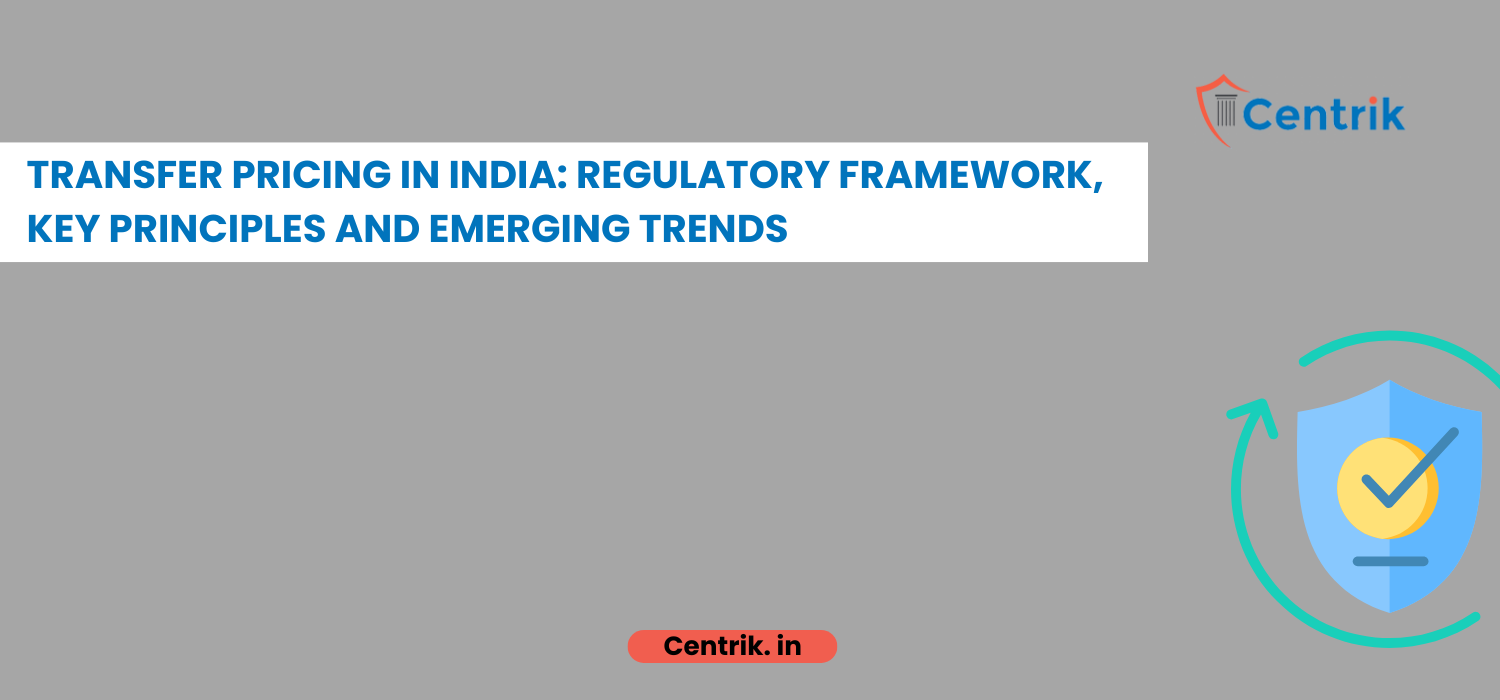Introduction
Transfer pricing is the actual price charged in a transaction between related entities forming part of the same Multi-National Enterprises (MNEs). Since the tax rates vary from country to country, transfer pricing becomes a method to reduce the tax liability of the MNE as a whole. It involves setting up transfer prices in such a manner that lesser profits are booked in countries with higher tax rates. For example, a company that is a member of the group manufactures products in a high-tax country, would sell them at a lower price, thereby booking fewer profits, to its affiliates in tax haven countries. These prices are lower than the prices that the group would have obtained had the enterprises been unrelated and been dealt with at arm’s length eroding the tax revenues of the host country. Thus, transfer pricing can be said to be a tax avoidance practice adopted by MNEs.

India’s transfer pricing framework is primarily governed by the Income Tax Act, of 1961 and is further elaborated through various rules and guidelines issued by the Central Board of Direct Taxes (CBDT).
Regulatory Framework
In India, transfer pricing regulations are primarily encapsulated in Sections 92 to 92F of the Income Tax Act, 1961 (“the Act”). These sections provide a comprehensive framework for determining the arm’s length price of intercompany transactions. The regulations are designed to prevent tax evasion and ensure fair tax reporting by MNEs operating in India.
- Arm’s Length Principle: As per Section 92 of the Act, any income arising from an international transaction or a specified domestic transaction must be computed having regard to the arm’s length price. The arm’s length price is defined as the price that is applied or agreed to in a transaction between unrelated parties in comparable circumstances.
- Transfer Pricing Rules: The Income Tax Act is complemented by the Income Tax Rules, 1962, which provide detailed guidelines on how to determine the arm’s length price. Specifically, Rule 10A defines the methods for determining the arm’s length price and includes the Comparable Uncontrolled Price (CUP) Method, Resale Price Method (RPM), Cost Plus Method, Profit Split Method, and Transactional Net Margin Method (TNMM).
- Documentation Requirements: To substantiate their transfer pricing policies, taxpayers are required to maintain extensive documentation. Rule 10D of the Income Tax Rules mandates that entities maintain detailed documentation, including financial information, a description of the organizational structure, and a record of the transfer pricing method used. This documentation is crucial for the taxpayer to demonstrate compliance and for tax authorities to assess the arm’s length nature of the transactions.
- Transfer Pricing Adjustments: Section 92 of the ITA also allows for adjustments to be made to the income or expenses of related entities if their transactions are not conducted at arm’s length. Such adjustments are aimed at ensuring that profits are appropriately allocated among the entities involved.
Recent Developments
Recent developments in Indian transfer pricing law reflect a growing alignment with international standards and a response to emerging global challenges:
- Increased Scrutiny and Compliance: The tax authorities have intensified their scrutiny of transfer pricing practices. This increased focus is partly due to the broader global emphasis on combating base erosion and profit shifting (BEPS). The Indian government has been proactive in implementing measures aligned with the OECD’s BEPS Action Plan to curb aggressive tax planning.
- Advanced Pricing Agreements (APAs): To provide greater certainty and reduce disputes, the Indian tax authorities have introduced the concept of Advanced Pricing Agreements (APAs). An APA is a binding agreement between a taxpayer and the tax authorities that establishes the transfer pricing methodology for future transactions. This mechanism aims to prevent future disputes and offer a preemptive resolution to potential transfer pricing issues.
- Dispute Resolution Mechanism: India has also incorporated measures to address transfer pricing disputes, such as the Mutual Agreement Procedure (MAP) and the Competent Authority Agreement (CAA). These mechanisms facilitate the resolution of disputes between countries regarding transfer pricing adjustments and aim to avoid double taxation.
- Digital Economy and Intangibles: The rise of the digital economy and the increasing significance of intangible assets have prompted the Indian tax authorities to update their transfer pricing guidelines. The focus has shifted to better address the valuation and taxation of digital goods and services, which is in line with global trends and OECD recommendations.
Conclusion
Transfer pricing remains a crucial aspect of Indian taxation law, ensuring MNEs adhere to fair pricing practices in their intercompany transactions. The regulatory framework, anchored in the Income Tax Act and supplemented by detailed rules and guidelines, reflects India’s commitment to international standards while addressing local challenges. As global economic dynamics evolve, ongoing adaptations to India’s transfer pricing regulations will be essential for maintaining alignment with international practices and ensuring equitable tax outcomes.




 join For Updates
join For Updates